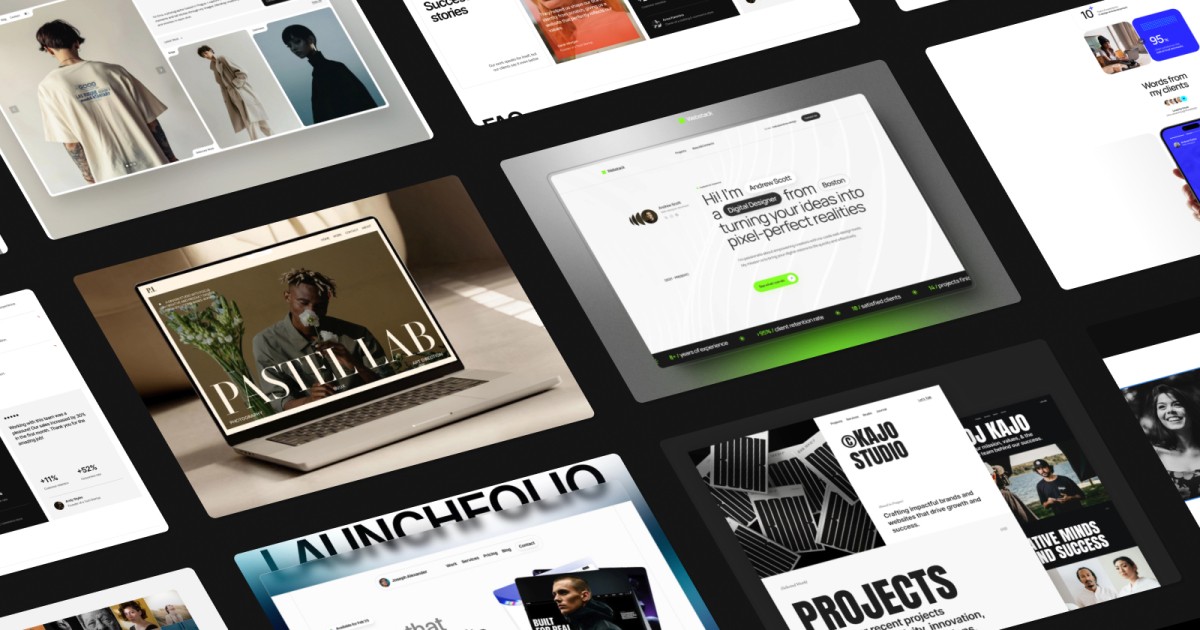This is your best expression of skills, your approach to architecting and your professional narrative. A straightforward list of technologies and URLs on a Github will not suffice. In order to be memorable, you should build an irrefutable full stack developer portfolio template as a compelling argument for hiring you.
Build a full stack portfolio template to help you get hired
The basis for this work is a clear value proposition. Upon visiting your site, the user should be able to identify you and the value you can provide for the user in a few seconds. This is more than just a full-stack developer proposition. Are you an e-commerce server expert? Are you using WebSockets expertly for real-time applications? Providing an accessibility feature for high-performance React interfaces? Your title and short bio should communicate your precise blend of skills. This immediate context elevates a just user to an interested practitioner contemplating your technical capabilities.
The focus of the design of your portfolio is, of course, the demonstration of the project. This is the point of transition from conjecture to reality. The mistake is you are putting a carousel of static images and a couple of lines of text. Rather, think of each project as a case study. Take your three or four most important projects for example to include as many important details about what your process was. Don't display just a result. Illuminate the entire process.
Problem and solution: Start by asking "why." What specific problem was solved by this project? Then simply explain your decision by employing language that gives value.
This is now the time to detail the technical aspects
The idea here is to tell a story about the technology stack rather than listing it. Why did you select the technology? You chose Node.js over Go, because it is better at handling I/O and can process all those asynchronous requests better? Why PostgreSQL, not MongoDB, for this data? The thoughtfulness that goes into selecting a technology implies that you are intentionally designing and adding value to your work, not just writing syntax.
Architecture and challenges: Clearly describe the architecture of the application You can have a diagram along with an explanation of how the services communicate. But, more importantly what is at least one technical challenge you had to solve during the project. How did you know there was a memory leak? How did you cache the database request that was slow? You will have sketched the problems as well as giving a demonstration of how you solved it, all in one, and this is gives a much clearer sense of how you think through solving problems.
Demo / live code - running a live app is probably not your best option. You are trying to show and prove that this is what you work with, and that you have gone through the deployment process with your work. You can provide a link to the source coded of the app. The source code should be a decent repository, organized, with information etc. about what and how to deploy your application, truly showing your professionalism.

Projects convey you can create, but your About page should show you can contribute. Now is the time to take your technical resume human. Go beyond a regular resume. Discuss what have you have done in the past, and what is your current area of development interest. Be sure to include "soft" skills -- communication, teamwork, project management -- and if doable provide numbers. Did you improve the CI/CD pipeline to reduce the time to deploy by 20%? Did you mentor a junior developer? This helps to give a picture of a well rounded professional with experience that is not programming.
The meta aspect of your portfolio also warrants its own definition. The "app", where your portfolio lives, is a real project. Its performance, usability, and clean modern design are significant evidence of your ability. A slow, clunky portfolio completely eliminates everything you claim to be. It should be lightning fast, keyboard accessible and screen reader friendly, and it should provide a great experience with mobile devices, tablets or desk pc.
To make this easier, Praxis, my free Framer template, already has project sections structured as case studies, so you can just plug in your work.
An ideal portfolio is, ultimately, of strategic importance. These are carefully selected works of your best, placed in the context of a narrative about value and problem-solving. This is your space where you can demonstrate not only that you can program, but also that you can create solutions and solve complex problems. Having freed yourself from the standard list of projects and created a reliable professional template for a full-stack developer's portfolio, you will no longer be looking for a job, but will begin to implement it. You are no longer a candidate, but a solution to a problem.
Full Stack Developer Portfolio Template - FAQ
How do I customize this template?
In Framer, just click and edit text, swap images, and adjust styles. You can easily change sections, colors, and layouts visually without touching code.
How do I showcase my full stack skills?
Use project blocks inside the template to present case studies. Add project images, describe your role, highlight frontend/backend choices, and link to GitHub or demos.
How do I organize my skills?
The template includes sections for categories like Frontend, Backend, Databases, and Tools. In Framer, you can duplicate or reorder these sections to best represent your stack.
Common issues and fixes?
Images not showing: Re-check the media asset path in Framer.
Layout looks off on mobile: Switch to responsive preview and adjust breakpoints directly.
Contact form not working: Make sure the form is connected to Framer’s built-in form handling.
Slow performance: Optimize images before uploading and avoid oversized assets.




